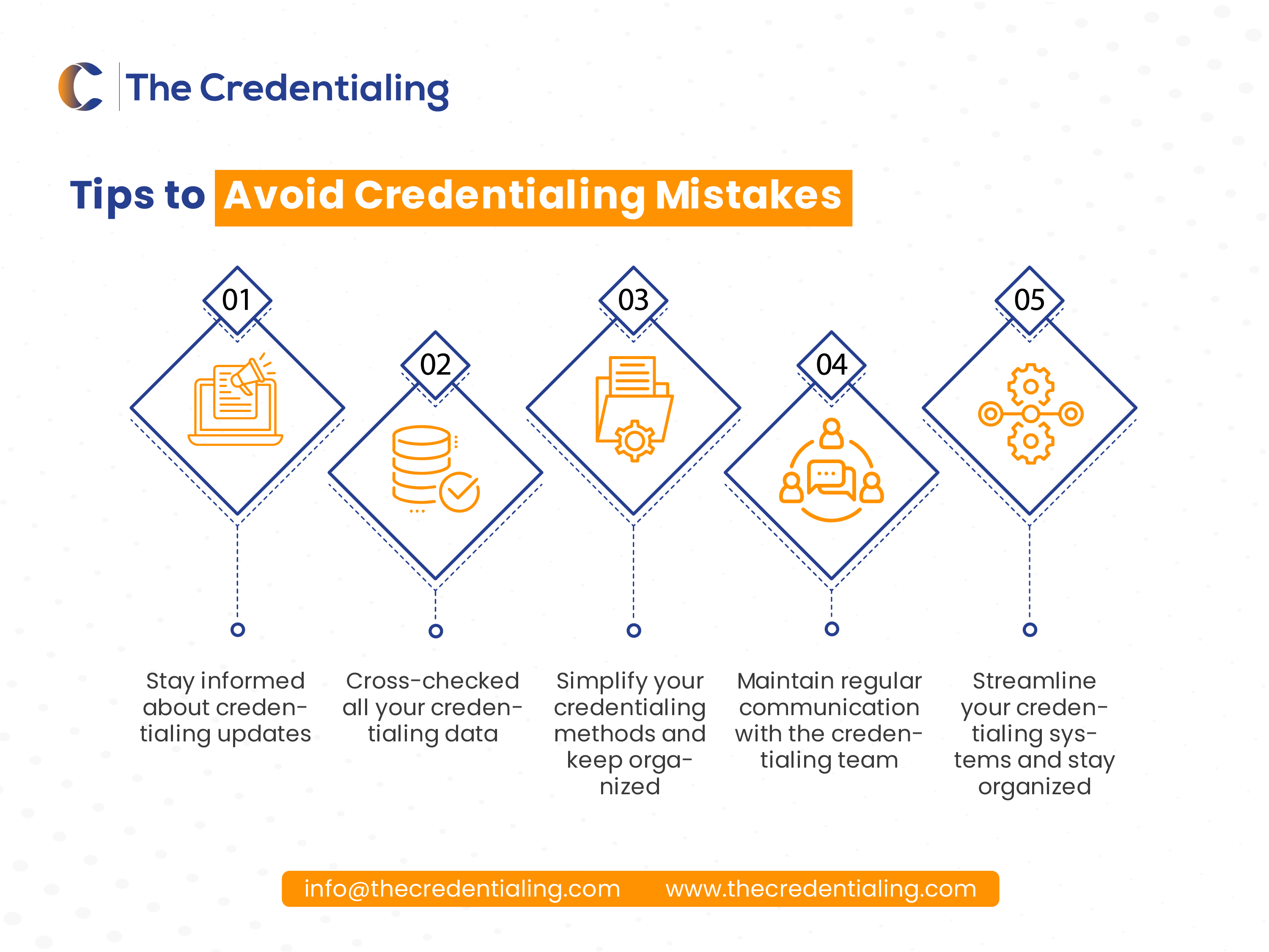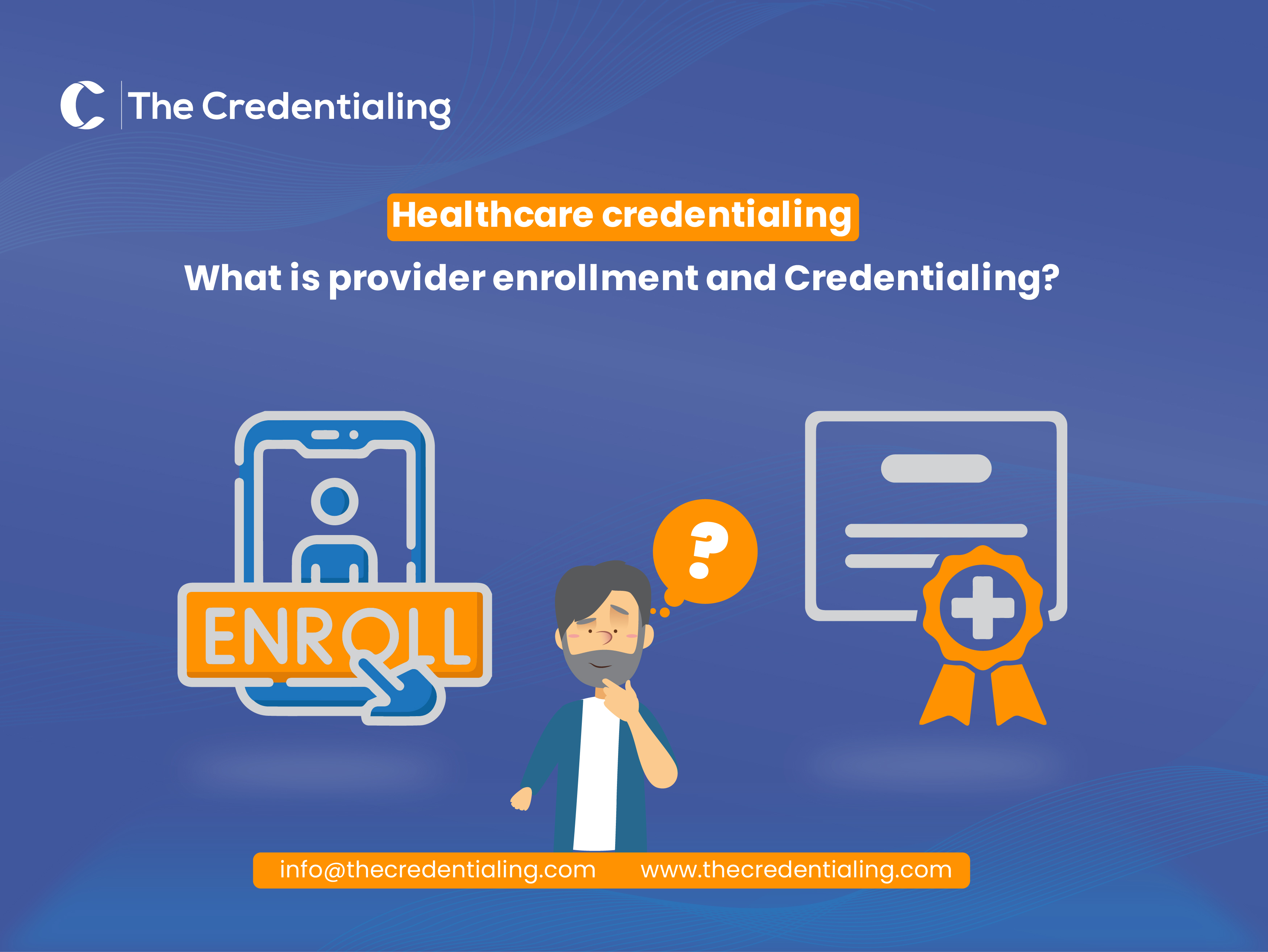Healthcare Credentialing-What is Provider Enrollment and Credentialing
Credentialing and enrollment are the two ways of provider verification in healthcare. The processes determine the level of healthcare providers’ ability, experience, and qualification to ensure better care delivery. However, without proper management of provider credentials, it’s not possible for professionals to take entry in insurance networks. Hence, CMS (Centers for Medicaid and Medicare Services) has set these systems. Not only to help in identifying the providers’ eligibility to participate in Medicaid and Medicare insurance networks but also to maintain the practice credibility to manage care. However, the significant difference between both these procedures lies in their application to become the Medicare or Medicaid provider. Enrollment is the first step of the process for healthcare providers who want to take part in these programs. Credentialing supplements those who are enrolled in any of the systems. The purpose of credentialing a healthcare provider is to ensure the professionals are eligible and meet all the requirements of regulatory guidelines to deliver care in practice.
Let’s guide you further in detail on the enrollment status of Medicaid, and the steps involved in these processes but first! You should understand the significant difference between provider enrollment and credentialing in healthcare.
A Breakdown of Credentialing and Enrollment for Providers!
In order to join the payer network for patient care delivery, credentialing and enrollment are critical steps for providers in healthcare. While Enrollment registers a provider with programs like Medicare, Credentialing validates their qualifications, licensure, and training. For healthcare practice, fair reimbursement and maintaining compliance standards, the processes are of the utmost.
Provider Enrollment Vs. Credentialing in Healthcare
| Provider Enrollment | Provider Credentialing |
|---|---|
|
|
The Role of PECOS Lookup in Provider Credentialing
Managing provider data manually is an effort-taking process with the risk of data leakage. However, automation has the solution! Hence, PECOS (Provider Enrollment, Chain, and Ownership System) lookup is a digital database. It helps professionals to efficiently manage provider’s enrollment. The CMS (Centers for Medicare and Medicaid) has set a dedicated online system that ensures the seamless management of provider enrollment with mechanisms to check CMS data accuracy. Plus, the system provides an efficient communication platform between providers and CMS and indicates the provider status. By using the system, providers manage major and minor details like identifiers such as the Medicare Provider Number and Medicare PTAN (Provider Transaction Access Number). Plus, the system allows them to renew their enrollment, withdraw from the Medicare program, and keep their information updated.
Providers also use tools like PTAN Lookup by NPI number or Medicare PTAN Lookup to maintain compliance and cross-check their data. Moreover, they also use the NPI to Medicaid ID search engine which makes data retrieval efficient. By leveraging PECOS Lookup in credentialing, managing and verifying data becomes easier along with the reduced administrative workload. Below are the key advances of PECOS Lookup for providers in healthcare:
- Since automation is the key, PECOS streamlines the verification regardless of the need for manual checks and reduces error.
- Healthcare professionals get real-time updates through the most current information available in the system.
- Many programs involved can easily access and manage data for credentialing with the system offering a single platform to store the data.
- Coordination between entities like Medicare, Medicaid, and other programs is also improved as PECOS integrates with other CMS tools.
- Practices and healthcare organizations have the advantage of accurate and up-to-date data to meet regulatory requirements.
- PECOS also facilitates enrollment for telehealth providers with the rising demand for virtual care.
- Automation and data centralization save time for administrative staff and resources for healthcare facilities.
Why is it Essential to Check the Provider’s Medicaid Enrollment Status?
Medicaid Enrollment Status shows the current stage of the provider’s application progress. Plus, it shows the progress of provider’s participation in the Medicaid program. Checking the status shows whether the professional is actively enrolled, their approval is pending or needs further operation to complete the process. On the other hand, provider enrollment status ensures the progress of the healthcare provider’s registration across the payer network. Checking the provider’s Medicaid enrollment status is crucial since the status changes over time. They must ensure validating the details for renewals to avoid disruptions of participation in the Medicaid program.
Steps to check Medicaid Enrollment Status:
For an effective verification of a Provider's enrollment in Medicaid, you can navigate the CMS system. Or, use the Medicare Physician Compare Tool. Providers must enroll in the PECOS system to maintain the accuracy of their information and stay compliant with the program. However, the database is updated weekly, so it's important to monitor a provider's NPI status and check the Preclusion List to ensure eligibility for long-term participation. To ensure the successful verification of the provider's application status, you can follow the steps below:
- Visit the official Medicaid website of your state or the CMS portal.
- Use your registered credentials or NPI number for access.
- Find the section labeled “Enrollment Status” or “Application Status.”
- Provide details like application ID, NPI, or tax ID for precise tracking
- Check if the application is approved, pending, or needs additional action
Florida Medicaid Provider Enrollment Status: The Leverage or Risk!
Considering the significant drop in enrollment recently, enrollment in Florida’s
Medicaid program is both essential and challenging. No matter whether the step ensures
access to a large patient base and increases reimbursement, the recent data shows a
decline in enrollment since the end of the COVID-19 public health emergency in spring
2023. The drop from around 5.78 million beneficiaries in April 2023 to 4.34 million in
September poses inevitable changes in eligibility reassessments. However, participation
is beneficial since it offers healthcare access to a larger patient base. For instance,
low-income individuals, families, pregnant women, children, and disabled
individuals.
So, what’s the solution to optimizing enrollment status in such a lucrative state?
Understanding is a critical initiative! Start with learning the process of checking the
Florida Medicaid provider enrollment status if you are interested in getting registered
in the state’s Medicaid program. Initiate the submission of the Medicaid FL Provider
Enrollment Application through the AHCA (Agency for Healthcare Administration) portal.
You can also navigate through mymedicaid-florida.com provider enrollment system to
complete the step.

How to Become a Medicaid Provider in Florida?
Follow the simple steps and get your registration done! Becoming a Medicaid Provider in the state of Florida may require similar steps. However, there’s a little distinction:
- Ensure you meet Florida Medicaid’s provider criteria, including licensure and certifications.
- Register on the mymedicaid-florida.com portal.
- Fill out the Florida Medicaid provider enrollment application via the AHCA portal.
- Provide necessary documents like NPI, licensure, tax ID, and practice details.
- Participate in background checks and site visits, if required.
- Agree to Medicaid terms and conditions for participation.
- Monitor your AHCA Provider Enrollment status through the AHCA or MyMedicaid portal.
- Once approved, start serving Medicaid beneficiaries under Florida's program
Conclusion: Where to Find Reliable Credentialing and Provider Enrollment for My Practice?
Keep learning and strengthen your research on the top providers of credentialing process for your practice requirements. Understanding provider enrollment and credentialing is vital to effectively participating in insurance networks, including Medicaid and Medicare. As for your question about finding reliable partners to trust, MedsNexus is available 24/7 to support you with all your credentialing needs. Simplify the process and ensure compliance with us while focusing on delivering the best patient care. We will never let you compromise, but we offer an efficient process for increasing profit!
